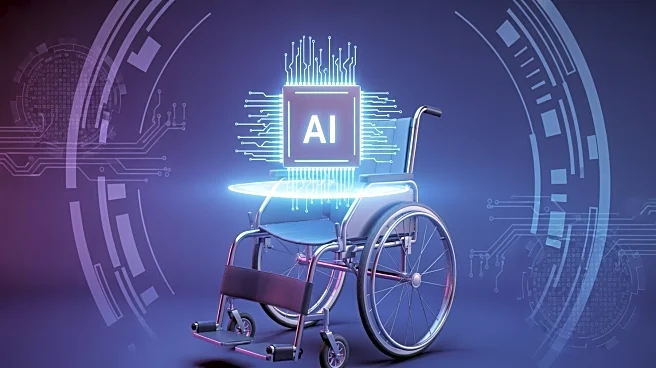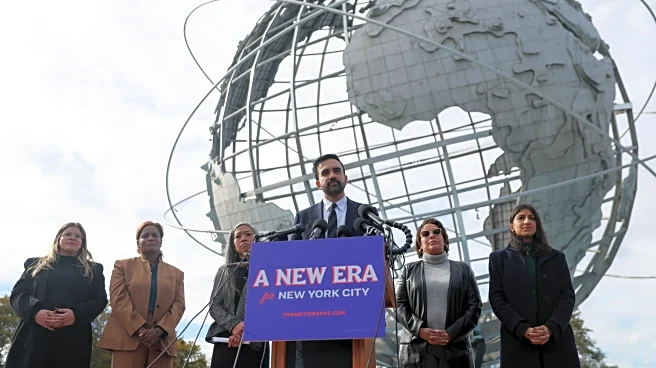What's Happening?
A 19-year-old Israeli innovator, Aviel Bitton, has developed an AI-powered safety system for motorized wheelchair users, which was highlighted at a New York fundraiser organized by the Israeli nonprofit
Unistream. The system uses cameras and sensors to detect obstacles, providing alerts through voice and visual cues on a smartphone app. Bitton's innovation aims to help users navigate safely without fear of collisions. The event also featured other Unistream graduates sharing their stories, emphasizing the importance of youth entrepreneurship and innovation.
Why It's Important?
Bitton's AI wheelchair safety system addresses a significant need for individuals with physical disabilities, potentially improving their mobility and safety. The innovation reflects the growing role of technology in enhancing accessibility and inclusivity. By showcasing such developments at international events, it highlights the potential for global collaboration and support for technological solutions that can make a real difference in people's lives. The event also underscores the importance of empowering young entrepreneurs from underserved communities to drive change and innovation.
What's Next?
Bitton plans to continue his work in his hometown, contributing to the community that inspired his innovation. The Unistream program's focus on improving Israeli advocacy among youth worldwide suggests ongoing efforts to foster international dialogue and collaboration. Future developments may include further enhancements to the AI system and broader implementation across different regions, potentially leading to partnerships with organizations focused on disability rights and technology.
Beyond the Headlines
The event highlights the ethical dimension of using technology to improve accessibility for marginalized groups. It also raises cultural considerations regarding the representation of young innovators in global forums, potentially influencing perceptions of Israeli advocacy and entrepreneurship. Long-term, such initiatives could contribute to shifts in how technology is integrated into social services and community support systems.












